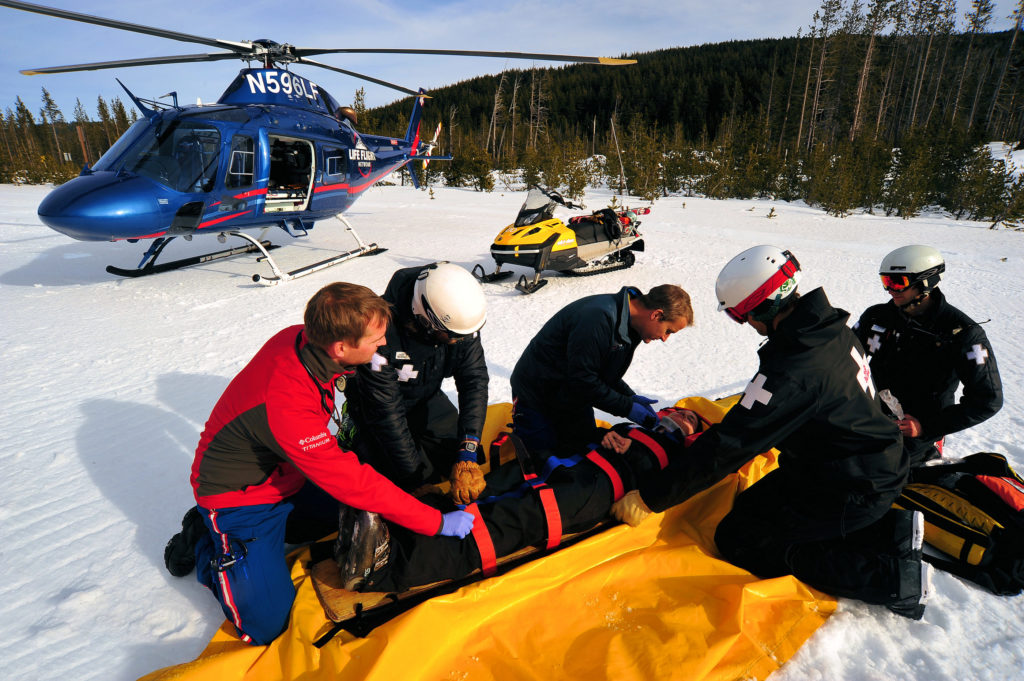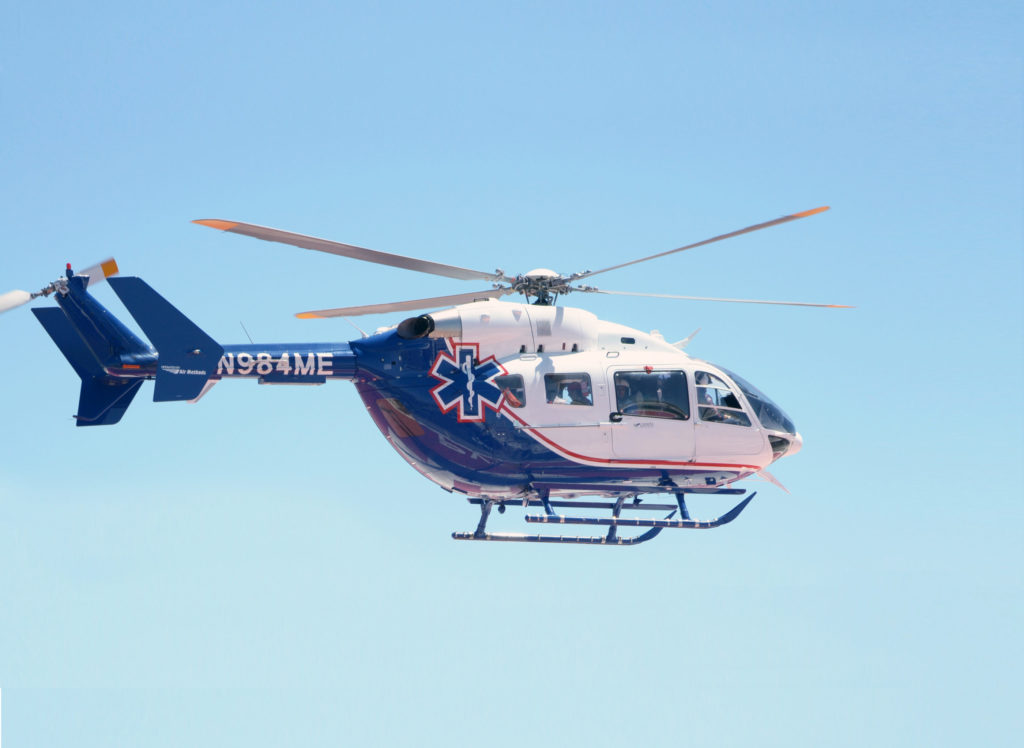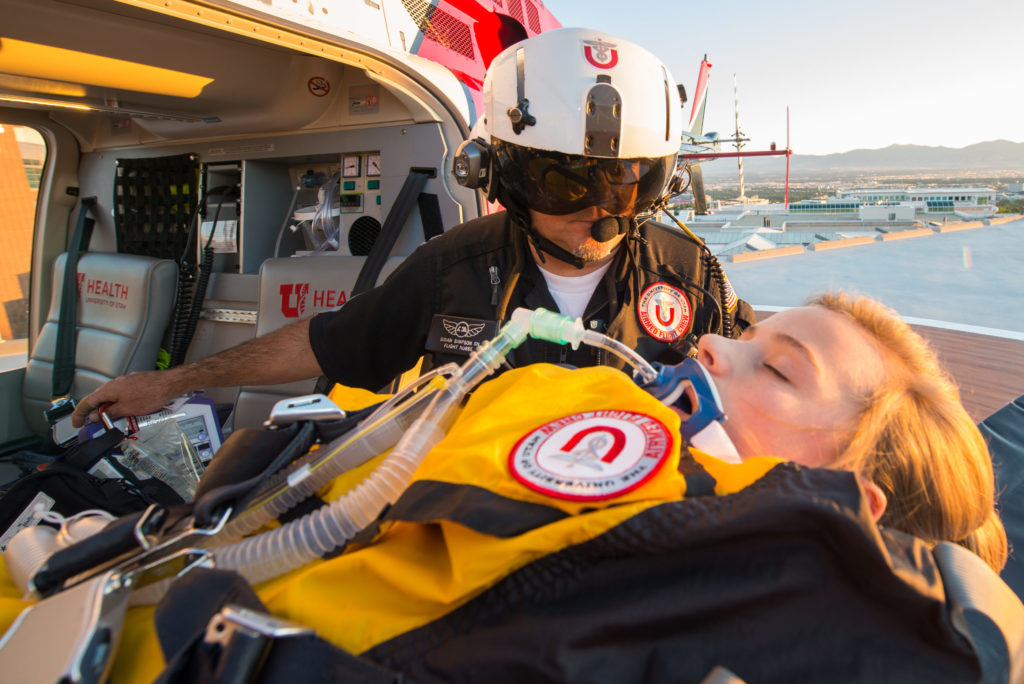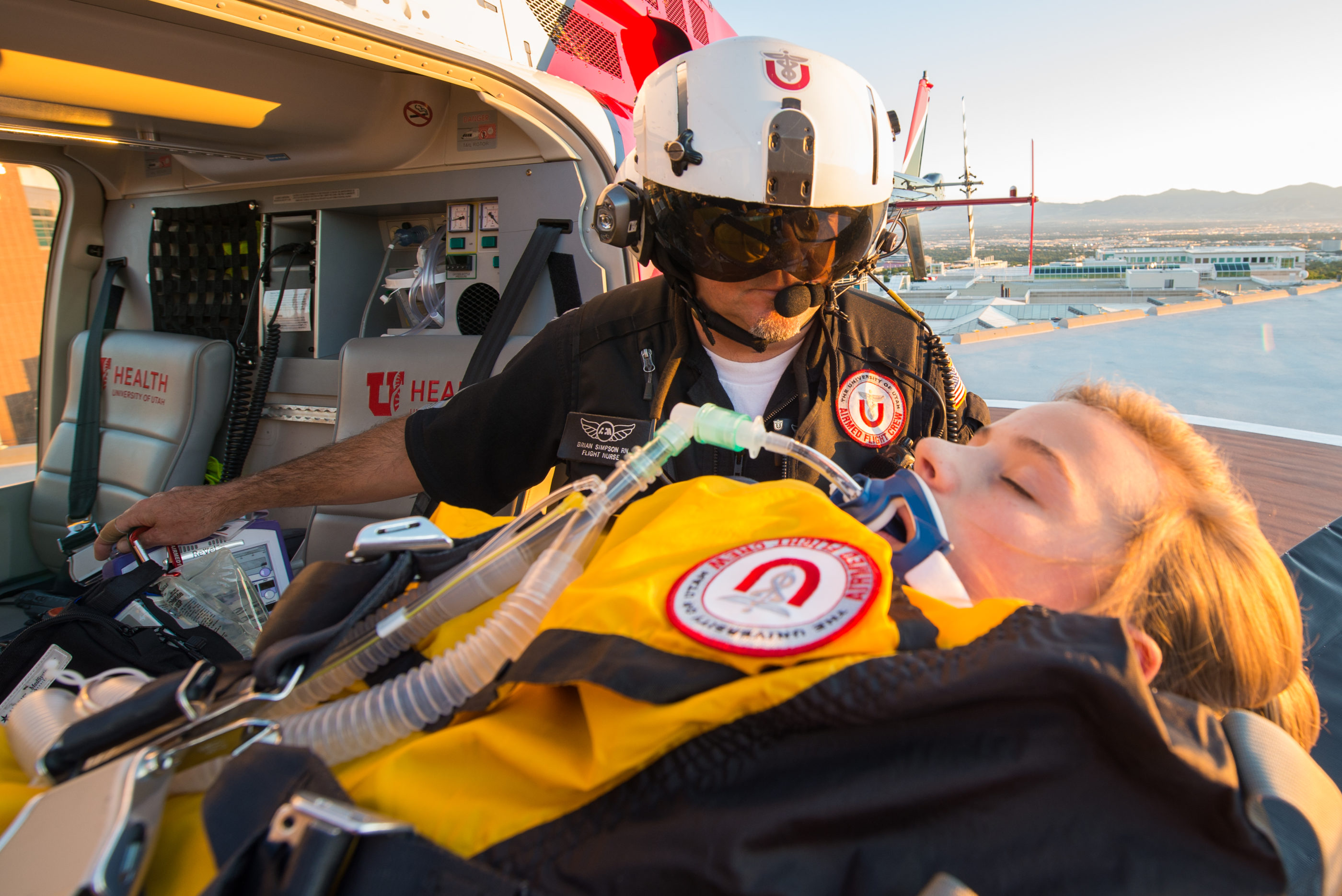New legislation to end surprise medical billing could spell far-reaching changes for the U.S. air ambulance industry, slashing profits associated with exorbitant balance bills and laying the groundwork for future reimbursement policies that incentivize safety and quality.

Passed by Congress in late December as part of the omnibus spending and Covid relief bill, the No Surprises Act prohibits most emergency and non-emergency medical providers from surprising patients with bills not covered by their insurers because the providers were out of network.
Instead of sticking patients with the unpaid bill, providers will have 30 days to negotiate a settlement with insurers. If negotiations fail, the claim will go before an independent dispute resolution (IDR) entity, which will award either the provider’s or the insurer’s proposed payment amount in a so-called “baseball-style” arbitration — designed to encourage both parties to come to the table with reasonable proposals.
The act includes several sections focused specifically on air ambulances, which have been a source of surprise “balance bills” that routinely exceed $40,000 for amounts not covered by patients’ insurers. Because air ambulance providers are considered to be air carriers under the Airline Deregulation Act (ADA) — and have thus been shielded from state efforts to rein in their charges — it was incumbent upon the federal government to address the problem of surprise billing in the air ambulance industry.
The No Surprises Act subjects air ambulance operators to the same general IDR process and prohibition on balance billing as other providers. In determining the payment amount, the IDR entity must consider the median in-network rate for air ambulance services in the same geographic area, as well as factors including patient acuity, the provider’s quality and outcomes measures, the training and experience of its medical personnel, and the type of vehicle used.
However, the IDR entity may not consider the provider’s billed charges, which in the air ambulance industry — thanks to the ADA — are essentially uncapped. Neither may the arbitrator take into account the “non-negotiated rates” of government payers such as Medicare, which most air ambulance operators agree no longer cover the cost of providing the service.
The No Surprises Act also establishes reporting requirements intended to increase transparency in the industry, with providers and insurers each responsible for submitting specific data related to costs and claims. That data will be used by the Department of Health and Human Services (HHS) — in consultation with the Department of Transportation, which has already established an Air Ambulance and Patient Billing Advisory Committee — to assess the market for air ambulance services, including “whether there are instances of unfair, deceptive, or predatory practices by providers of air ambulance services in collecting payments from patients.”
The No Surprises Act is widely seen as a compromise between insurers — who sought to tie reimbursement to low Medicare payment rates — and providers, who fought for the IDR option that should raise their overall reimbursement by comparison. Although providers succeeded in obtaining an IDR process without a minimum threshold, tying the IDR evaluation to the median in-network rate is likely to limit how much they can get through the process, and increased transparency from the new reporting requirements may put further downward pressure on prices.
The extent to which the legislation will, in practice, favor or disadvantage each party now hinges on rulemaking by HHS, the Department of Labor, and the Department of the Treasury, which are charged with hammering out the details before the act’s effective date of Jan. 1, 2022.
“How is this going to impact the industry? I have no idea,” said Christopher Eastlee, vice president of public affairs for the Association of Air Medical Services (AAMS), during the association’s virtual town hall on the legislation on Jan. 12. “We have a very, very long way to go in terms of this rulemaking; we have to define some terms like ‘median network rate,’ ‘geographic area’ that are going to have a tremendous impact on how the IDR entities will digest the information that they get from both provider and insurer.”
Even with the specifics of the IDR process yet to be determined, however, others believe that the prohibition on surprise balance bills will drive fundamental changes to an industry that has become increasingly dominated by private equity companies seeking to maximize their profits.
“Balance billing is the linchpin of this business model,” said Jeff Frazier of Sentinel Air Medical Alliance, which represents payers in disputes over high billed charges for air medical transports. “I think we’ve seen the peak of the so-called community-based providers, and perhaps now we can see a focus on quality and a right-sizing of the industry.”
Private equity and surprise billing
The rise of the community-based model for air medical services began in 2002, when the Centers for Medicare and Medicaid Services (CMS) started phasing in a national fee schedule for air ambulance providers as a consequence of the Balanced Budget Act of 1997. Prior to 2002, the industry was dominated by hospital-based programs, which historically received higher reimbursement than “community-based programs” — standalone air ambulance operations not associated with a specific healthcare facility.

The 2002 fee schedule established a single rate for helicopter transports regardless of the business model or type of aircraft used. That predictably incentivized the growth of low-cost community-based programs, which could stand up operations more rapidly and with less investment than the typical hospital-based program. Community-based operators tended to favor single-engine, visual flight rules (VFR) helicopters, which are cheaper to operate than the twin-engine, instrument flight rules (IFR)-capable aircraft that are the standard for helicopter emergency medical services in many parts of the world.
In 2003, according to AAMS and its Atlas and Database of Air Medical Services, there were 545 air ambulances in the United States; a decade later, that number had nearly doubled. But the growth in patient transports didn’t keep pace with the growth in helicopters, particularly insofar as many new air ambulances were added in areas with existing coverage, meaning that the average number of patients transported by each helicopter declined. That was problematic, because most of the costs associated with providing air ambulance services are fixed — helicopters must be maintained and staffed around the clock no matter how many patients they fly.
As the volume of transports fell, the average cost per transport increased. With Medicare and Medicaid reimbursing only their low standard rates, and many uninsured patients unable to pay for their transports at all, air ambulance providers increasingly raised rates for privately insured patients to make up the difference.
Declining transport volumes were seen by all types of air ambulance programs, including hospital-based and nonprofit ones. A 2017 study by the Government Accountability Office (GAO) found that the median prices charged for helicopter air ambulance transports approximately doubled between 2010 and 2014. When the GAO revisited the subject in 2019, it found that the median price charged by helicopter air ambulance providers for privately insured patients was $36,400 in 2017, up from $22,100 in 2012.
However, the largest bills and most aggressive collection practices were associated with community-based and for-profit providers like Air Methods, which increased its average price charged per transport from $13,000 in 2007 to $49,800 in 2016. When payers began pushing back against ballooning charges, these providers sent balance bills to patients for tens of thousands of dollars. Panicked patients often succeeded in persuading their insurers to cover more of the charges, keeping the providers’ profits high.
That lucrative business model attracted private equity to the industry. The private equity firm KKR acquired Air Medical Group Holdings in 2015, rolling it and other acquisitions into Global Medical Response (GMR) in 2018. Air Methods was acquired in 2017 by the private equity firm American Securities in a $2.5 billion leveraged buy-out. Between them, these two large companies control around two-thirds of both the helicopter and fixed-wing air ambulance Medicare markets nationwide, according to a Brookings analysis released last year.
The same analysis confirmed that high air ambulance charges are concentrated in air ambulance carriers owned by private equity firms, which in 2017 had a standardized average charge of $48,250, versus $28,800 for other air ambulance carriers. Standardized average charges from private equity carriers grew by 79 percent between 2012 and 2017, compared to 36 percent growth for carriers not part of a private equity-owned or public company.
With their move into the air ambulance industry, private equity firms were largely following a playbook they had successfully employed in other sectors of the healthcare industry, explained Eileen Appelbaum, co-director of the Center for Economic and Policy Research. For example, KKR also owns Envision Healthcare, a physician staffing firm that has flourished as hospitals have outsourced emergency rooms (ERs) and other departments.
In outsourced ERs, even if the hospital is in-network with the patient’s insurer, the physicians may be out-of-network. As Appelbaum and her co-author Rosemary Batt note in “Private Equity Buyouts in Healthcare: Who Wins, Who Loses?” Envision’s EmCare unit (now part of Envision Physician Services) has been a major source of surprise medical bills. Yale University researchers found that when EmCare took over the management of emergency departments, its charges for caring for patients were nearly double those billed by previous physician groups.

“Surprise medical bills, this is part of the business model of the private equity companies,” Appelbaum told Vertical. “Their model has been [to] load these companies up with debt, and then how they are going to pay off the debt is with the surprise medical bills.”
In 2019, as Congress began working on legislation to end surprise billing, Envision and another private equity-backed company, TeamHealth, funded a dark-money group called Doctor Patient Unity that spent $28 million campaigning against the legislation in areas where mostly Republican senators were up for re-election. That advertising blitz continued into 2020, with TeamHealth and Envision spending $2.2 million on political ads in the first few months of the coronavirus crisis, even as they cut pay and benefits for ER docs and other medical workers.
Private equity firms’ intense advertising and lobbying effort was successful inasmuch as they were seen to “dodge the worst from the surprise-billing crackdown,” according to Bloomberg. Nevertheless, the limits put on the IDR process threaten to diminish profits across their healthcare portfolios.
In a statement on the No Surprises Act, Air Methods highlighted: “One key concern for Air Methods is the possibility of tying reimbursements to a median in-network rate that uses inaccurate benchmarks and does not adequately compensate air medical companies for their services.” The company added, however, that “this legislation does not nullify the great gains we have made in reaching in-network agreements with many payers around the country, which has made a huge impact on taking patients out of the middle of the billing process. We also strongly support policies that promote more robust data collection, which will allow for fair in-network reimbursement rates.”
Air Methods also took a stab at its main competitor, KKR-owned Global Medical Response. GMR’s air ambulance companies — including Air Evac Lifeteam, Guardian Flight, Med-Trans Corporation, and REACH Air Medical Services — sell memberships that cover out-of-pocket expenses associated with transports through their “AirMedCare Network.” Because these operators still collect payments for transports from their members’ insurance plans, memberships are a profit center with little of the risk or oversight associated with offering traditional insurance products.
“In the past, air medical memberships were sold under the guise as a way to protect consumers from large air medical bills,” Air Methods stated. “However, this new legislation and continued progress reaching in-network agreements show there is no need for any consumer to buy — or for any provider to sell — memberships.”
A GMR spokesperson begged to differ, highlighting the fact that the No Surprises Act does not absolve patients of all cost-sharing requirements.
“While the No Surprises Act and greater in-network coverage are significant inroads to fully protecting patients from financial hardship related to needed medical care, they do not eliminate the need for air medical memberships. Patients with private insurance can still face cost burden as a result of high insurance co-pays and deductibles and uninsured Americans could face even higher costs,” the spokesperson told Vertical. “Strong and effective air medical membership programs are more than necessary in times like these — they are essential.”
Where does the industry go from here?
According to Appelbaum, most private equity firms seek to exit their investments in three to five years. With the owners of Air Methods and GMR now at that horizon — and the air ambulance industry facing changes that could profoundly impact its profitability — it is unclear whether or how American Securities and KKR will exit the industry, or how their heavily leveraged companies will fare once they do.

The prohibition on balance billing isn’t the only aspect of the No Surprises Act that could reshape the industry. Tom Judge, executive director of LifeFlight for Maine, told Vertical, “While protecting patients from surprise egregious balance bills is essential, cost reporting as well as improving quality and safety standards in the bill are the most important patient-centric measures.”
In addition to making quality and outcomes measures part of the IDR process, the legislation establishes an Advisory Committee on Air Ambulance Quality and Patient Safety for the purpose of making recommendations to Congress. The committee will study options for tiering different levels of clinical capability, establishing patient safety and quality standards, and improving service reliability at night and in poor weather, as well as examine clinical triage criteria and differences between air ambulance vehicle types.
That could eventually lead to a reimbursement structure that reflects the level of service provided, instead of flat rates that treat single-engine, VFR helicopters with minimally trained crew as functionally equivalent to sophisticated IFR aircraft carrying highly qualified clinicians. (Concerned about the poor safety record of the predominantly VFR air ambulance industry, the National Transportation Safety Board made a more limited recommendation along these lines over a decade ago, but CMS rejected it.)
The Association for Critical Care Transport (ACCT), which represents a number of nonprofit and hospital-based air ambulance providers, campaigned vigorously for these provisions. ACCT chair Dennis Mack said the No Surprises Act “charts a new course for the critical care industry and toward the vision established by ACCT many years ago to have an accountable system that is designed around the needs of our patients.”
Roxanne Shanks, ACCT executive director, highlighted that the cost and claims reporting required by the legislation “will finally illustrate and validate the wide variation across the industry,” while the advisory committee will lay the groundwork for establishing quality, patient safety, service reliability, and clinical capability standards for each level of air ambulances.
“Our accomplishments in this legislation on behalf of the patients we are committed to serving are substantial, and many years in the making,” she stated.
AAMS president and CEO Cameron Curtis told Vertical that her organization also welcomes “the consideration of a wide range of factors in the IDR process” and is “confident the high-quality patient care our members provide will be a favorable addition to the IDR consideration.”
As with the effects of the prohibition on balance billing, the impact of this explicit focus on quality will be greatly shaped by the HHS, Labor, and Treasury Departments’ upcoming rulemaking. Stakeholders within the air ambulance industry — and the healthcare industry more broadly — are therefore gearing up to actively represent their interests in the rulemaking process.
“Certainly AAMS is going to be engaging with a lot of new faces and some of the faces we already know in this tri-agency group,” Chris Eastlee said during the Jan. 12 town hall.
“We are a very, very small portion of the multitude of healthcare services that will be impacted by this, and so I think it’s very, very critical that we get in there early, we tell our story early, and we start to define these terms in a way that’s factually accurate, but also . . . in a way that most benefits air medical providers and patients that we’re transporting.”





